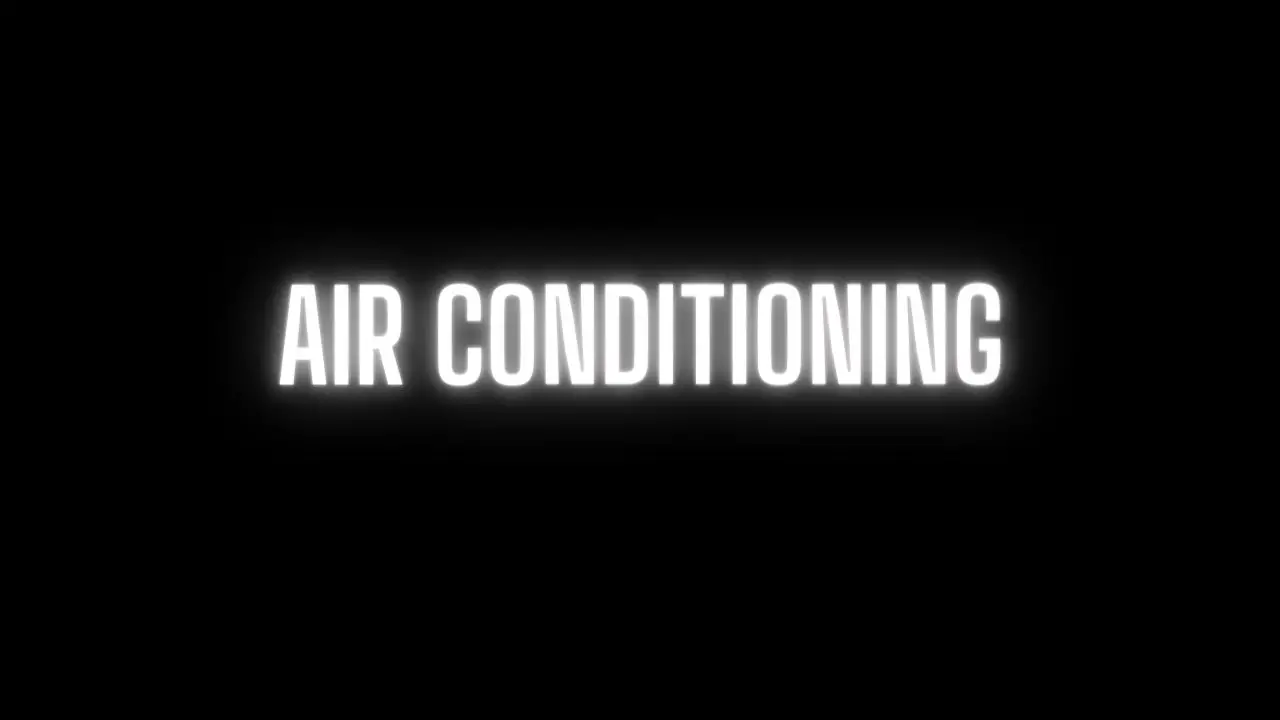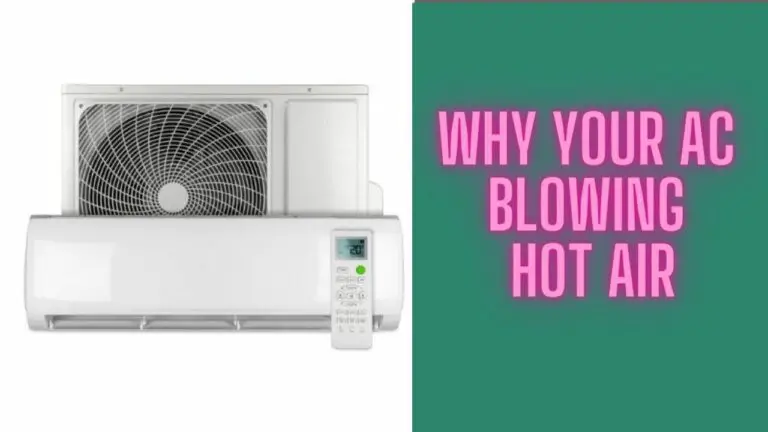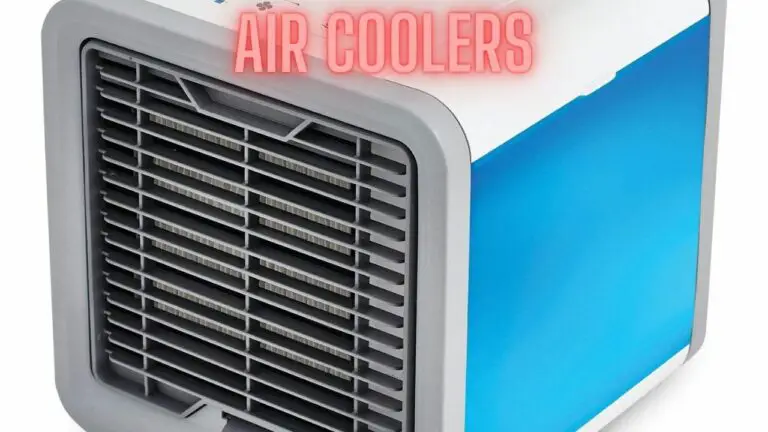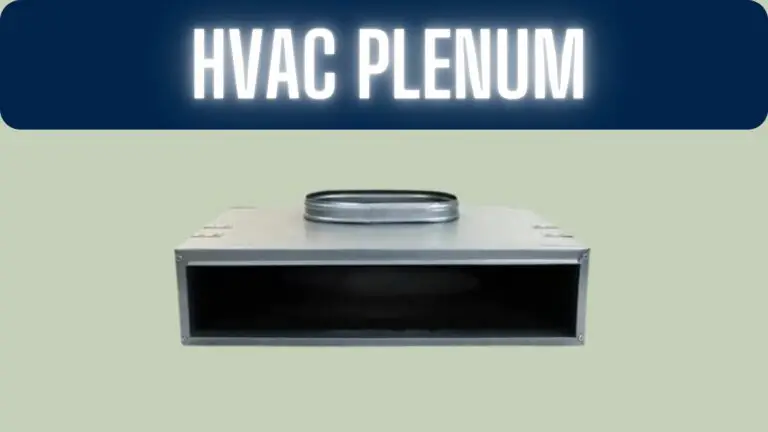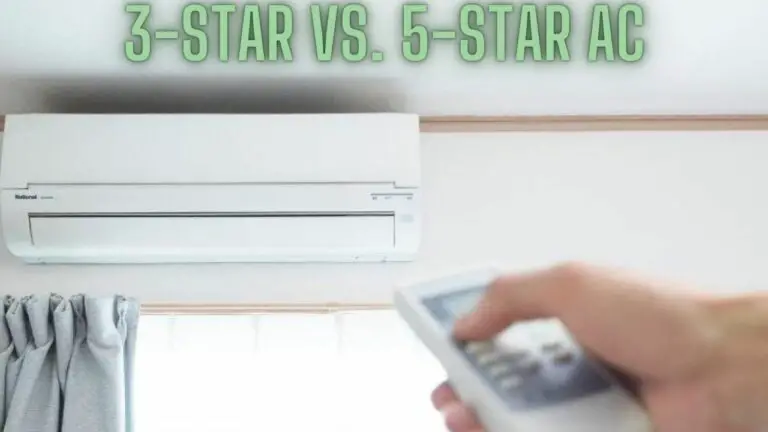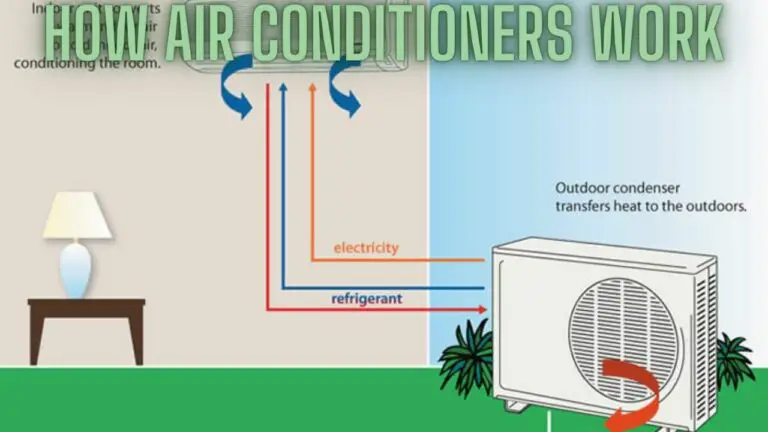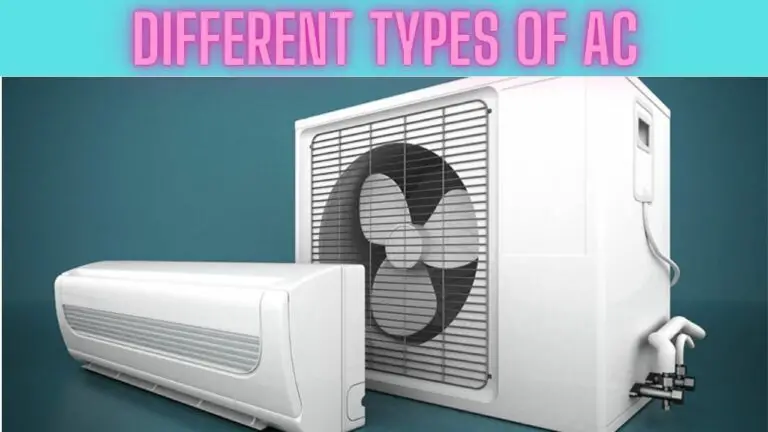Air Conditioning: Understanding and Explained
Introduction
Air conditioning is a technology that regulates and modifies the air temperature, humidity, and overall quality within indoor spaces to create comfortable and healthy living or working environments. It has become an essential aspect of modern life, providing relief from extreme temperatures and improving the quality of life in various settings, including homes, offices, vehicles, and industrial facilities.
Definition and Purpose:
- Air conditioning refers to the process of controlling and altering the temperature, humidity, cleanliness, and distribution of air within enclosed spaces to create a comfortable and suitable environment for occupants.
- The primary purpose of air conditioning is to provide thermal comfort and indoor air quality, ensuring that occupants remain comfortable and productive regardless of external weather conditions.
Historical Background:
- The concept of air conditioning dates back to ancient civilizations, where various methods, such as evaporative cooling and passive ventilation, were used to mitigate the effects of heat.
- Modern air conditioning technology began to emerge in the 19th century, with the development of mechanical cooling systems and refrigeration techniques.
- The invention of the first electric air conditioner by Willis Carrier in 1902 marked a significant milestone in the history of air conditioning, revolutionizing indoor comfort and enabling the growth of various industries.
As society continues to evolve and urbanization increases, the demand for air conditioning continues to rise, driven by factors such as climate change, technological advancements, and changing lifestyle preferences. In this comprehensive guide to air conditioning, we will explore the principles, components, types, and applications of air conditioning systems, as well as energy efficiency, maintenance practices, environmental considerations, and future trends in the industry. Join us as we delve into the world of air conditioning and its vital role in shaping modern living spaces.
Principles of Air Conditioning
Air conditioning systems operate based on fundamental principles of thermodynamics and heat transfer. Understanding these principles is essential for comprehending how air conditioning works. Here’s an overview:
- Thermodynamics and Heat Transfer:
- Air conditioning relies on the principles of thermodynamics, which govern the transfer of heat energy between objects or systems.
- Heat naturally flows from areas of higher temperature to areas of lower temperature until thermal equilibrium is reached.
- Air conditioning systems manipulate this heat transfer process to remove heat from indoor spaces, thus cooling the air.
- Refrigeration Cycle:
- The refrigeration cycle is the foundation of air conditioning systems. It involves the circulation of a refrigerant through various components to absorb heat from indoor air and release it outdoors.
- The cycle consists of four main stages: compression, condensation, expansion, and evaporation.
- During the compression stage, the refrigerant is compressed into a high-pressure, high-temperature gas by the compressor.
- The refrigerant then flows to the condenser, where it releases heat and condenses into a liquid.
- Next, the liquid refrigerant passes through an expansion valve or metering device, which reduces its pressure and temperature.
- Finally, the low-pressure, low-temperature refrigerant enters the evaporator, where it absorbs heat from indoor air, causing the air to cool.
- The refrigerant then returns to the compressor to repeat the cycle.
- Types of Refrigerants:
- Refrigerants are substances used in air conditioning systems to transfer heat. Common refrigerants include hydrochlorofluorocarbons (HCFCs), hydrofluorocarbons (HFCs), and natural refrigerants such as ammonia and carbon dioxide.
- The choice of refrigerant is crucial due to environmental considerations, including ozone depletion and global warming potential. Recent trends favor the use of environmentally friendly refrigerants with lower greenhouse gas emissions.
By grasping the principles of thermodynamics, heat transfer, and the refrigeration cycle, one can better understand how air conditioning systems function to cool indoor spaces effectively. These principles form the basis of the technology that has transformed our ability to control indoor environments for comfort and productivity.
Components of Air Conditioning Systems
Air conditioning systems comprise various components that work together to regulate indoor air temperature, humidity, and quality. Understanding these components is essential for comprehending how air conditioning systems function. Here’s an overview of the key components:
- Compressor:
- The compressor is the heart of the air conditioning system and is responsible for compressing the refrigerant gas, raising its temperature and pressure.
- It circulates the refrigerant through the system and plays a crucial role in the refrigeration cycle.
- Condenser:
- The condenser is a heat exchanger located outdoors in split-system air conditioners or within the packaged unit in central air conditioning systems.
- It receives the high-pressure, high-temperature refrigerant vapor from the compressor and removes heat from it, causing the refrigerant to condense into a liquid.
- Heat from the refrigerant is transferred to the outdoor air, and the cooled refrigerant flows to the expansion valve.
- Evaporator:
- The evaporator is another heat exchanger located indoors in split-system air conditioners or within the air handling unit in central air conditioning systems.
- It receives the liquid refrigerant from the expansion valve and allows it to expand and evaporate into a gas.
- As the refrigerant evaporates, it absorbs heat from indoor air, cooling it in the process.
- The cooled air is then distributed throughout the space by the air handling unit’s fan.
- Expansion Valve:
- The expansion valve, also known as a metering device, is located between the condenser and the evaporator.
- It regulates the flow of refrigerant into the evaporator, controlling its pressure and temperature.
- The expansion valve reduces the pressure of the refrigerant as it enters the evaporator, facilitating the evaporation process and ensuring efficient heat absorption from indoor air.
- Air Handling Unit (AHU):
- The air handling unit is a component of central air conditioning systems responsible for circulating and distributing cooled air throughout the building.
- It contains a fan that draws indoor air through the evaporator coil, where it is cooled, filtered, and then distributed through ductwork to various rooms.
These components work together in a coordinated manner to facilitate the refrigeration cycle, remove heat from indoor air, and distribute cooled air throughout the building. By understanding the role of each component, one can gain insights into the functioning of air conditioning systems and how they contribute to indoor comfort.
Types of Air Conditioning Systems
Air conditioning systems come in various types, each suitable for different applications and building configurations. Here are the most common types of air conditioning systems:
- Window Air Conditioners:
- Window air conditioners are self-contained units installed in a window or through a wall opening.
- They consist of a single housing containing all components, including the compressor, condenser, evaporator, expansion valve, and fan.
- Window AC units are typically used to cool single rooms or small spaces and are relatively affordable and easy to install.
- Split Air Conditioners:
- Split air conditioners consist of two main units: an indoor unit and an outdoor unit.
- The indoor unit contains the evaporator coil, expansion valve, and fan, while the outdoor unit houses the compressor and condenser coil.
- Split AC systems are commonly used for cooling individual rooms or multiple rooms in residential and commercial buildings.
- They offer quieter operation compared to window units and provide more flexibility in installation since the indoor and outdoor units can be placed separately.
- Central Air Conditioning Systems:
- Central air conditioning systems are designed to cool entire buildings or multiple zones within a building.
- They consist of a centralized unit, typically located outdoors, that contains the compressor, condenser, and a large evaporator coil.
- Cooled air is distributed throughout the building via ductwork and delivered to each room through vents or registers.
- Central AC systems provide uniform cooling and are suitable for large residential homes, commercial buildings, and industrial facilities.
- Portable Air Conditioners:
- Portable air conditioners are self-contained units on wheels that can be moved from room to room as needed.
- They include an exhaust hose that expels hot air outdoors through a window or sliding door.
- Portable AC units are ideal for cooling specific areas or rooms where permanent installation is not feasible or desired.
- Ductless Mini-Split Systems:
- Ductless mini-split systems are similar to split air conditioners but do not require ductwork for air distribution.
- They consist of an outdoor unit connected to one or more indoor air handlers mounted on walls or ceilings.
- Ductless mini-splits are highly flexible and energy-efficient, making them suitable for retrofitting older homes, room additions, or buildings without existing ductwork.
Each type of air conditioning system has its advantages and limitations, depending on factors such as space requirements, installation costs, energy efficiency, and cooling capacity. Understanding the characteristics of each system type can help you choose the most suitable option for your specific needs.
Sizing and Installation
Proper sizing and installation of air conditioning systems are critical for ensuring optimal performance, energy efficiency, and comfort. Here’s an overview of the key considerations:
- Calculating Cooling Load:
- The first step in sizing an air conditioning system is to calculate the cooling load of the space to be cooled. This involves assessing factors such as the size of the area, insulation levels, windows and doors, heat-generating equipment, occupancy, and climate conditions.
- Various methods, such as the Manual J calculation method, are used to determine the cooling load accurately.
- Proper Sizing of Equipment:
- Based on the calculated cooling load, the appropriate size and capacity of the air conditioning equipment (e.g., window unit, split system, or central AC) are selected.
- Undersized units may struggle to cool the space adequately, leading to discomfort and increased energy consumption, while oversized units may cycle on and off frequently, resulting in inefficient operation and humidity control issues.
- Installation Considerations:
- Proper installation of air conditioning systems is essential for optimal performance and longevity. It involves several key considerations, including:
- Location: Choose an optimal location for the outdoor unit, away from direct sunlight, obstructions, and sources of heat or vibration.
- Airflow: Ensure proper airflow around the outdoor unit and adequate ventilation for heat dissipation.
- Refrigerant Lines: Install refrigerant lines properly, ensuring proper sizing, insulation, and sealing to prevent leaks and ensure efficient refrigerant flow.
- Electrical Connections: Follow manufacturer’s instructions for electrical wiring and connections, ensuring compliance with local building codes and safety standards.
- Drainage: Properly route condensate drainage to prevent water accumulation and potential damage to the system and surrounding structures.
- Ductwork (for central systems): Install ductwork properly, ensuring proper sizing, insulation, and sealing to minimize energy losses and ensure even airflow distribution.
- Proper installation of air conditioning systems is essential for optimal performance and longevity. It involves several key considerations, including:
- Professional Installation:
- While DIY installation may be feasible for certain types of air conditioning systems (e.g., window units or portable ACs), professional installation is recommended for larger or more complex systems (e.g., split systems or central AC).
- Qualified HVAC (Heating, Ventilation, and Air Conditioning) technicians have the necessary expertise, tools, and training to properly size, install, and commission air conditioning systems for optimal performance and efficiency.
By carefully sizing and installing air conditioning systems according to industry best practices and manufacturer’s guidelines, you can ensure reliable operation, energy efficiency, and long-term comfort in your indoor spaces.
Energy Efficiency and SEER Ratings
Energy efficiency is a crucial consideration when selecting an air conditioning system, as it directly impacts operating costs and environmental sustainability. One of the primary metrics used to assess the energy efficiency of air conditioners is the Seasonal Energy Efficiency Ratio (SEER) rating. Here’s what you need to know:
- Seasonal Energy Efficiency Ratio (SEER):
- SEER is a standardized measure of the cooling output (in British Thermal Units or BTUs) of an air conditioning system divided by the energy input (in watt-hours) during a typical cooling season.
- Higher SEER ratings indicate greater energy efficiency, meaning the system can provide more cooling output per unit of energy consumed.
- SEER ratings range from around 13 to 25 or higher for residential air conditioning systems. The U.S. Department of Energy (DOE) sets minimum SEER requirements for different regions.
- Importance of High SEER Ratings:
- Choosing an air conditioning system with a higher SEER rating can result in significant energy savings over the system’s lifespan. Higher SEER-rated systems consume less electricity to achieve the same cooling output, leading to lower utility bills.
- In addition to cost savings, high SEER-rated systems reduce greenhouse gas emissions and environmental impact by minimizing energy consumption and reliance on fossil fuels.
- Factors Affecting SEER Ratings:
- Several factors influence the SEER rating of an air conditioning system, including:
- Equipment Efficiency: The design and technology of the compressor, condenser, evaporator, and other components impact overall system efficiency.
- Size and Capacity: Proper sizing and matching of equipment to the cooling load of the space ensure optimal efficiency.
- Installation Quality: Proper installation, including adequate airflow, refrigerant charge, and insulation, is critical for achieving rated efficiency levels.
- Maintenance: Regular maintenance, such as filter cleaning/replacement and coil cleaning, helps maintain system efficiency over time.
- Several factors influence the SEER rating of an air conditioning system, including:
- SEER Rating Guidelines:
- When purchasing a new air conditioning system, consider the SEER rating about your climate, cooling requirements, and budget.
- Higher SEER-rated systems may have a higher initial cost but can provide greater long-term savings through reduced energy consumption.
- The DOE provides guidelines and recommendations for SEER ratings based on geographic regions and climate conditions to help consumers make informed decisions.
By selecting an air conditioning system with a high SEER rating and ensuring proper installation and maintenance, you can maximize energy efficiency, reduce operating costs, and minimize environmental impact while maintaining indoor comfort.
Air Conditioning Maintenance
Regular maintenance is essential for ensuring the efficient operation, longevity, and reliability of air conditioning systems. Proper maintenance helps prevent breakdowns, improve energy efficiency, and maintain indoor air quality. Here are key aspects of air conditioning maintenance:
- Filter Replacement:
- Regularly inspect and replace air filters according to manufacturer recommendations. Clogged or dirty filters restrict airflow, reduce system efficiency, and can lead to poor indoor air quality.
- Disposable filters should typically be replaced every 1 to 3 months, depending on usage and environmental factors. Washable filters can be cleaned and reused as directed.
- Coil Cleaning:
- Clean the evaporator and condenser coils annually to remove dirt, dust, and debris buildup. Dirty coils reduce heat transfer efficiency and increase energy consumption.
- Use a soft brush, compressed air, or a commercial coil cleaner to gently remove debris from the coils. Avoid using excessive force or abrasive materials that could damage the coils.
- Condensate Drainage:
- Inspect and clear condensate drains to prevent clogs and water backups. Blocked drains can cause water damage to the system and surrounding areas and promote mold and mildew growth.
- Use a stiff brush or wire to remove any buildup or debris from the drain line. Pour a mixture of bleach and water down the drain to disinfect and prevent mold growth.
- Check Refrigerant Levels:
- Monitor refrigerant levels and inspect for leaks regularly. Low refrigerant levels can indicate leaks or other issues that require attention.
- If refrigerant levels are low, contact a qualified HVAC technician to inspect the system, repair any leaks, and recharge the refrigerant as needed.
- Inspect Electrical Components:
- Periodically inspect electrical connections, controls, and wiring for signs of wear, damage, or corrosion. Loose or damaged electrical components can pose safety hazards and affect system performance.
- Ensure that all electrical connections are tight and secure, and replace any damaged or frayed wiring as necessary.
- Check Thermostat Settings:
- Verify that the thermostat is functioning correctly and calibrated accurately. Incorrect thermostat settings can lead to uneven cooling, wasted energy, and discomfort.
- Consider upgrading to a programmable or smart thermostat for greater control and energy savings.
- Professional Maintenance:
- Schedule annual maintenance visits with a qualified HVAC technician to perform comprehensive inspections, cleaning, and tune-ups.
- Professional maintenance helps identify and address potential issues early, optimize system performance, and extend the lifespan of the air conditioning system.
By following a regular maintenance schedule and addressing any issues promptly, you can ensure that your air conditioning system operates efficiently, reliably, and safely, providing optimal comfort and indoor air quality year-round.
Indoor Air Quality (IAQ)
Indoor air quality refers to the cleanliness, freshness, and healthiness of the air within enclosed spaces such as homes, offices, schools, and other buildings. Poor indoor air quality can have detrimental effects on occupants’ health, comfort, and productivity. Here are key aspects of indoor air quality and strategies for improving it:
- Common Indoor Air Pollutants:
- Indoor air can contain various pollutants, including:
- Particulate Matter (PM): Fine particles such as dust, pollen, pet dander, and mold spores.
- Volatile Organic Compounds (VOCs): Chemicals emitted from building materials, furnishings, cleaning products, and other sources.
- Biological Contaminants: Bacteria, viruses, mold, and other microorganisms that can thrive in indoor environments.
- Radon: A naturally occurring radioactive gas that can seep into buildings from the soil.
- Carbon Monoxide (CO) and Carbon Dioxide (CO2): Gases produced by combustion appliances, vehicles, and human activities.
- Indoor air can contain various pollutants, including:
- Health Effects of Poor IAQ:
- Exposure to indoor air pollutants can lead to a range of health problems, including respiratory issues, allergies, asthma, headaches, fatigue, and other symptoms.
- Long-term exposure to indoor air pollutants may increase the risk of chronic respiratory diseases, cardiovascular diseases, and certain cancers.
- Strategies for Improving IAQ:
- Use Air Purifiers: High-efficiency particulate air (HEPA) filters and activated carbon filters can help remove airborne particles, allergens, and odors from indoor air.
- Ventilation: Ensure adequate ventilation to dilute indoor air pollutants and maintain fresh air circulation. Use exhaust fans, open windows when weather permits, and consider installing energy recovery ventilators (ERVs) or heat recovery ventilators (HRVs).
- Control Humidity: Maintain indoor humidity levels between 30% and 60% to prevent mold growth and minimize allergens. Use dehumidifiers in damp areas and address water leaks promptly.
- Source Control: Minimize indoor air pollutants by using low-VOC building materials, furnishings, and cleaning products. Avoid smoking indoors and properly maintain combustion appliances.
- Regular Cleaning: Vacuum carpets and upholstery regularly using HEPA-equipped vacuum cleaners. Clean and dust surfaces, change bedding frequently, and wash pet bedding to reduce allergens and dust mites.
- Test for Radon: Test for radon levels in basements and lower levels of buildings, especially in areas with high radon potential. Mitigate elevated radon levels as needed.
- Carbon Monoxide Detection: Install carbon monoxide detectors near sleeping areas and fuel-burning appliances to detect and alert occupants to potential CO leaks.
- Professional IAQ Assessment: Consider hiring a professional indoor air quality consultant to assess IAQ issues, conduct air quality testing, and recommend appropriate solutions.
Improving indoor air quality requires a comprehensive approach that addresses multiple sources of pollutants and incorporates ventilation, filtration, humidity control, and source control strategies. By implementing these measures, occupants can enjoy healthier and more comfortable indoor environments.
Smart and Connected Air Conditioning
Advancements in technology have led to the development of smart and connected air conditioning systems, which offer enhanced convenience, control, and energy efficiency. These systems leverage connectivity, automation, and intelligent features to optimize comfort and reduce energy consumption. Here’s an overview of smart and connected air conditioning:
- Wi-Fi Enabled Thermostats:
- Wi-Fi enabled thermostats allow users to remotely control and monitor their air conditioning systems via smartphone apps or web interfaces.
- Users can adjust temperature settings, set schedules, and receive alerts and notifications from anywhere with an internet connection.
- Smart thermostats learn users’ preferences over time and can automatically adjust settings to optimize comfort and energy savings.
- Remote Monitoring and Control:
- Smart air conditioning systems enable remote monitoring and control of key parameters such as temperature, humidity, and system status.
- Users can check indoor conditions, track energy usage, and receive alerts for issues such as equipment malfunctions or filter replacements.
- Remote access and control provide greater flexibility and convenience, allowing users to manage their HVAC systems efficiently, even when away from home or office.
- Integration with Smart Home Systems:
- Smart air conditioning systems can integrate with smart home platforms and ecosystems, such as Amazon Alexa, Google Assistant, Apple HomeKit, and others.
- Integration enables voice commands, automation, and interoperability with other connected devices and systems in the home.
- Users can create custom scenes, routines, and automations that synchronize air conditioning settings with other smart home devices, such as lighting, blinds, and security systems.
- Energy Saving Features:
- Smart air conditioning systems often include energy-saving features and algorithms designed to optimize energy usage and reduce utility bills.
- Features such as geofencing, occupancy detection, and weather-based adjustments enable the system to adapt operationally based on user behavior and environmental conditions.
- Energy usage data and insights provided by smart thermostats help users identify opportunities for energy conservation and efficiency improvements.
- Enhanced Comfort and Personalization:
- Smart air conditioning systems offer enhanced comfort and personalization through advanced scheduling, zoning, and temperature control options.
- Users can create custom schedules and temperature profiles for different rooms or zones, ensuring optimal comfort throughout the day.
- Adaptive algorithms and machine learning capabilities enable the system to anticipate users’ preferences and adjust settings accordingly.
By adopting smart and connected air conditioning systems, users can enjoy greater convenience, comfort, and energy efficiency while reducing environmental impact. These systems empower users to take control of their indoor environments and optimize their HVAC systems for maximum performance and savings.
Environmental Impact and Sustainability
Air conditioning systems have significant environmental impacts due to their energy consumption, refrigerant emissions, and contributions to climate change. However, advancements in technology and the adoption of sustainable practices are helping to mitigate these impacts. Here’s an overview of the environmental impact and sustainability considerations associated with air conditioning:
- Energy Consumption:
- Air conditioning systems consume large amounts of energy, particularly during peak cooling periods. This reliance on fossil fuels contributes to greenhouse gas emissions and global warming.
- Improving the energy efficiency of air conditioning systems through the use of high-efficiency equipment, smart controls, and building design strategies can reduce energy consumption and associated environmental impacts.
- Refrigerants and Ozone Depletion:
- Refrigerants used in air conditioning systems can have detrimental effects on the environment, including ozone depletion and global warming.
- Chlorofluorocarbons (CFCs) and hydrochlorofluorocarbons (HCFCs), once widely used as refrigerants, have been phased out due to their ozone-depleting properties.
- Hydrofluorocarbons (HFCs), commonly used as replacements for CFCs and HCFCs, have high global warming potentials (GWPs). Efforts are underway to transition to low-GWP or environmentally friendly refrigerants to mitigate climate impact.
- Regulations and Standards:
- Governments and regulatory bodies worldwide have implemented regulations and standards to reduce the environmental impact of air conditioning systems.
- Examples include energy efficiency standards (e.g., SEER ratings), restrictions on the use of ozone-depleting substances, and phase-out schedules for high-GWP refrigerants.
- Compliance with these regulations and standards helps promote the adoption of environmentally friendly practices and technologies in the HVAC industry.
- Eco-Friendly Alternatives:
- Advances in technology have led to the development of eco-friendly alternatives for air conditioning, such as:
- Natural Refrigerants: Substances with low or zero GWP, such as hydrocarbons, ammonia, and carbon dioxide, are gaining popularity as alternatives to traditional refrigerants.
- Renewable Energy: Integration of renewable energy sources, such as solar power, geothermal energy, and waste heat recovery, can reduce reliance on fossil fuels and decrease the carbon footprint of air conditioning systems.
- Passive Cooling Techniques: Passive cooling strategies, such as natural ventilation, shading, and thermal insulation, can reduce the need for mechanical cooling and minimize energy consumption.
- Advances in technology have led to the development of eco-friendly alternatives for air conditioning, such as:
- Lifecycle Considerations:
- Considering the entire lifecycle of air conditioning systems, including manufacturing, installation, operation, and disposal, is essential for assessing their overall environmental impact.
- Designing systems for durability, recyclability, and energy efficiency, as well as implementing proper maintenance and end-of-life recycling programs, can help minimize environmental harm throughout the lifecycle.
By adopting sustainable practices, embracing technological innovations, and adhering to regulatory requirements, the air conditioning industry can mitigate its environmental impact and contribute to global efforts to address climate change and promote sustainability. Consumers can also play a role by choosing energy-efficient systems, maintaining their equipment properly, and supporting environmentally responsible manufacturers and service providers.
Future Trends in Air Conditioning Technology
The air conditioning industry is continuously evolving, driven by technological advancements, regulatory changes, and shifting consumer preferences. Several emerging trends are shaping the future of air conditioning technology. Here’s an overview of some key trends:
- Energy Efficiency and Sustainability:
- Energy efficiency will remain a primary focus in future air conditioning technology, driven by regulatory requirements, environmental concerns, and rising energy costs.
- Advancements in compressor technology, heat exchanger design, refrigerants, and system controls will continue to improve efficiency and reduce energy consumption.
- Integration of renewable energy sources, such as solar power and geothermal energy, into air conditioning systems will further enhance sustainability and reduce reliance on fossil fuels.
- Smart and Connected Systems:
- Smart and connected air conditioning systems will become increasingly prevalent, offering enhanced convenience, control, and energy savings.
- Internet of Things (IoT) technology, cloud computing, and machine learning algorithms will enable remote monitoring, predictive maintenance, and adaptive control strategies.
- Integration with smart home ecosystems and voice-controlled assistants will provide seamless connectivity and interoperability with other connected devices and systems.
- Variable Refrigerant Flow (VRF) Systems:
- Variable refrigerant flow (VRF) systems, also known as multi-split systems, are gaining popularity for their energy efficiency, zoning capabilities, and design flexibility.
- VRF systems use variable-speed compressors and multiple indoor units to deliver precise cooling and heating to different zones within a building, optimizing comfort and energy usage.
- Natural Refrigerants and Low-GWP Alternatives:
- The transition to natural refrigerants and low-global warming potential (GWP) alternatives will accelerate in response to regulatory measures and environmental concerns.
- Hydrocarbons, ammonia, carbon dioxide, and other natural refrigerants offer low or zero GWP and excellent thermodynamic properties, making them attractive alternatives to synthetic refrigerants.
- Advanced Air Purification and Indoor Air Quality (IAQ) Solutions:
- Increasing awareness of indoor air quality (IAQ) issues and health concerns will drive demand for advanced air purification technologies and IAQ solutions.
- Integration of UV-C germicidal irradiation, photocatalytic oxidation (PCO), and electrostatic filtration technologies into air conditioning systems will help mitigate indoor air pollutants, allergens, and pathogens.
- Heat Pump Technology and Hybrid Systems:
- Heat pump technology, which provides both cooling and heating capabilities, will see wider adoption for its energy efficiency and versatility.
- Hybrid systems that combine air-source heat pumps with other heating and cooling technologies, such as geothermal heat pumps or absorption chillers, will offer increased efficiency and resilience.
- Material Innovations and Sustainable Design:
- Material innovations, such as advanced heat exchanger materials, phase-change materials (PCMs), and eco-friendly insulation materials, will contribute to improved performance and sustainability of air conditioning systems.
- Sustainable design principles, including passive cooling strategies, natural ventilation, and green building standards, will play a significant role in future air conditioning technology.
By embracing these trends and innovations, the air conditioning industry can address evolving challenges, improve energy efficiency, enhance comfort, and promote environmental sustainability in buildings and communities.
FAQS
How does air conditioning work?
Air conditioning works by removing heat from an indoor space and releasing it outside. It uses a cooling cycle involving refrigerant, coils, and fans to cool and dehumidify indoor air.
What are the different types of air conditioning systems?
There are several types of air conditioning systems, including window units, split system air conditioners, central air conditioning, and portable air conditioners. Each has its own applications and advantages.
How do I choose the right air conditioner for my home or space?
To choose the right air conditioner, consider factors like the size of the area you need to cool, energy efficiency, installation requirements, and budget. It’s often best to consult with a professional HVAC technician for guidance.
How often should I service my air conditioner?
Regular maintenance is essential to keep your air conditioner running efficiently. It’s recommended to have your AC serviced once a year, ideally before the cooling season begins.
What temperature should I set my thermostat to for optimal comfort and energy efficiency?
A5: A recommended setting for energy efficiency is around 78°F (25-26°C) when you’re at home and active. You can set it higher when you’re away. However, personal comfort preferences may vary.
How can I improve the energy efficiency of my air conditioner?
To improve energy efficiency, you can ensure proper insulation, seal gaps in doors and windows, use a programmable thermostat, and regularly clean or replace air filters.
What is the ideal humidity level for indoor comfort?
An indoor humidity level of around 40-60% is generally considered comfortable. Air conditioning helps to control humidity levels by removing excess moisture from the air.
Can air conditioning help improve indoor air quality?
Yes, many air conditioning systems come with filters that can help remove dust, allergens, and pollutants from the air, thus improving indoor air quality.
Are there health concerns associated with air conditioning?
While air conditioning itself isn’t harmful, poorly maintained systems can potentially harbor mold or bacteria. Regular maintenance and cleaning can mitigate these concerns.
Can I install an air conditioner myself, or do I need a professional technician?
Simple window units or portable air conditioners can often be installed by homeowners. However, for more complex installations like central air conditioning systems, it’s advisable to hire a professional HVAC technician to ensure proper setup and safety compliance.
Can I run my air conditioner 24/7?
Running your air conditioner constantly can increase energy bills. It’s best to use programmable thermostats to schedule cooling when needed, such as during the hottest parts of the day or when you’re at home.
Can I use my air conditioner’s fan-only mode for ventilation?
Yes, you can use the fan-only mode to circulate air in your space and improve ventilation. This mode doesn’t cool the air but can help distribute conditioned air more effectively.
Is it normal for my air conditioner to make noise?
Some noise is normal, but loud or unusual sounds may indicate a problem. Regular maintenance can help minimize noise and ensure your system runs quietly.
Conclusion
Air conditioning is not just about cooling the air; it’s about creating a comfortable, healthy, and habitable environment. Understanding how it works and its various types can help you make informed choices about the best AC system for your needs. In our modern world, air conditioning has become an indispensable technology that significantly enhances our quality of life, making it possible to remain comfortable in a wide range of climates and weather conditions.

